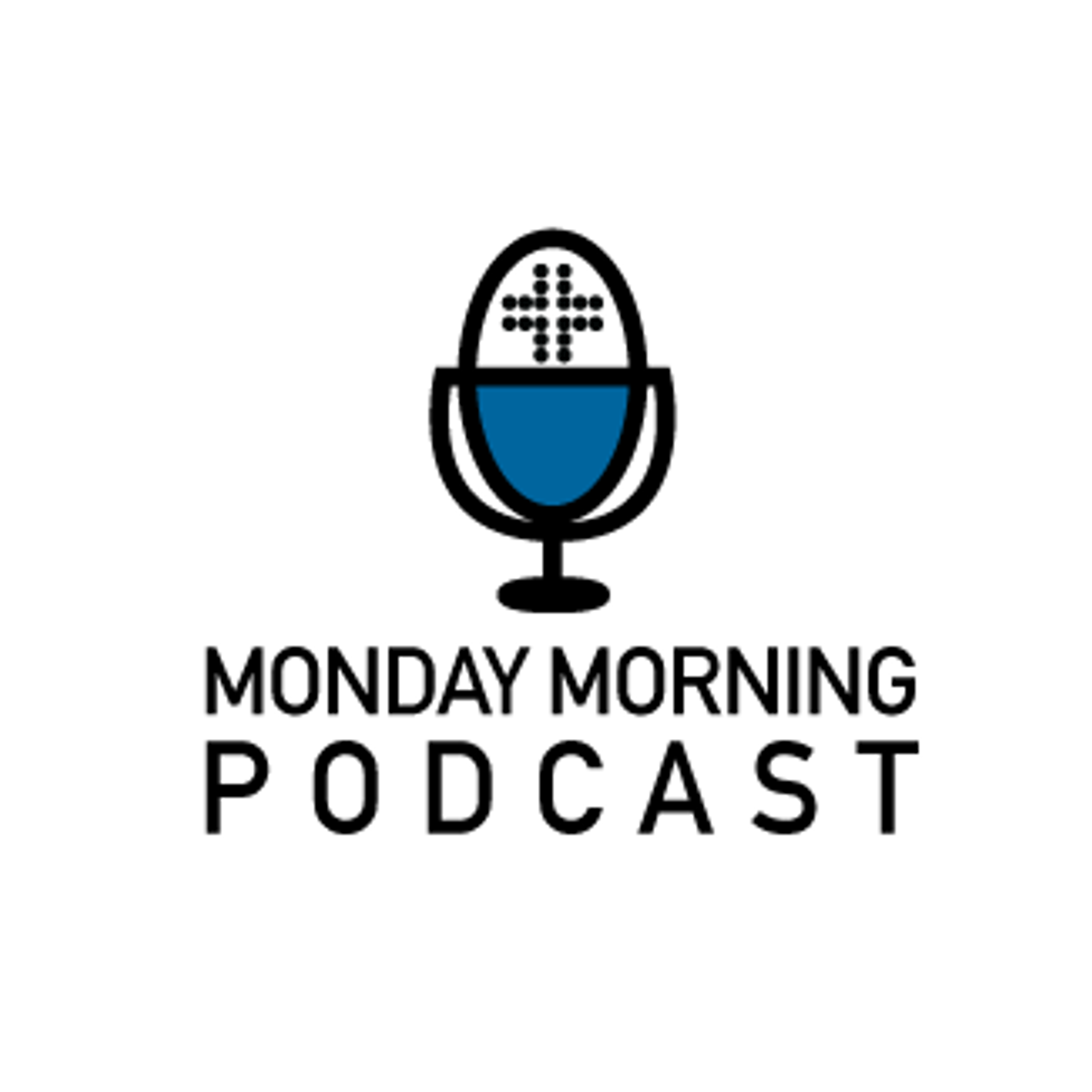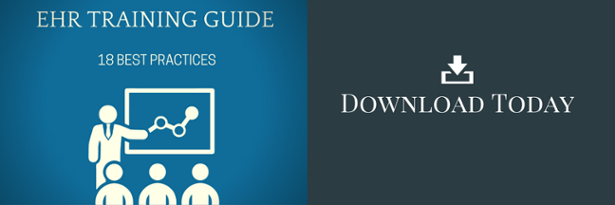(Healthcare IT Podcast) EMR Training: Discussion on Costs, Scheduling, and Best Practices ft. Bob Steele


For the fourth episode of our Monday Morning Healthcare IT Podcast Series, we get on the phone with Bob Steele, our Clinical Executive Vice President here at the HCI Group. Bob and Tom will be going over some training considerations that organizations should keep in mind during the implementation of a new EHR.
Also, make sure you check out last week’s episode, where Mike Sinno discussed some priorities that healthcare organizations need to have when planning for the support phase of an EMR implementation.

Transcript
Tom:
Hello and welcome everyone. My name is Tom Letro of the HCI Group, and today we will be joined on the line by Bob Steele, our Clinical Executive Vice President here at the HCI Group. During our conversation today, Bob and I will be discussing some training considerations that an organization should be aware of during the implementation of a new EHR. Thank you for joining us, Bob.
Bob:
Great, thanks, glad to be here.
Principles of EMR Training
Tom:
Glad to have you here, Bob. Now, as an organization or facility embarks on the implementation of any EHR, be it Epic, Cerner, etc. - in regards to training, what would you say are some of the grounding principles that they must consider?
Bob:
Well, I think first and foremost, is an up front, is an early realization that training is probably amongst one of the highest cost considerations when you’re implementing an EHR. It’s not uncommon, and for obvious reasons the focus is on the price of the application, and the licenses, as well as hardware and equipment for upfront costs but the efforts of training really need to be considered, and the finances and the budget need to be planned in advance.
EMR Training Costs
Tom:
And what are some costs associated with that?
Bob:
There’s cost associated with the appointment and relief of subject matter experts and analysts as you begin to design, and really look what’s important to your facility. The best plan is when you customize and develop your training and your design and build based on your specific organizational needs and processes. Then you have the cost of the trainers, and training the staff, as well as backfilling them from their regular duties, and the third piece is the cost that is associated with relieving your end users and your providers so they can attend the training, to be competent when the go-live arrives for the application. So again, depending on the service line area, these individuals may need to be backfilled anywhere from a four hour period of time up to a three day period of time.
Backfill for Training
Tom:
Four hours and three days is a pretty significant difference, is there any way you can determine how long your organization will need to backfill for those individuals?
Bob:
Sure, I would say it’s role specific and service line specific, so I think part of the importance of planning is to look at the size of the institution, the number of FTE’s, the service lines and applications that need to be trained, and then make sure that you design and schedule your training session so that they can meet the individual needs based on their performance and their duties within the facility.
Scheduling Process
Tom:
Right, and after you gather your data it is probably best to move on to the scheduling process. And what goes into the scheduling process? With so much going on, I feel like an organization needs to show some flexibility in this regard.
Bob:
Again, I think you hit the nail on the head, it’s flexibility. We have to remember that daily operations and patient care need to continue. You can’t pull everybody out of staff and off the bench at the same time, so you really need to match your total end users to be trained, for example with the size of your classroom, how many computers and spaces do you have available, and what is the maximum size of classes? So there is some mathematics and some calculations to really be looked at. So, look at that, remember backfill from regular responsibilities is not an option for some, so scheduling times and classes may need to include evening, after hours, and weekend schedules, so you really need to look at that and make sure that your flexible enough so that everybody gets an opportunity for training, in a time that works for them. The best practice and the best rule is “no training and no sign-on”, and you also want to look at a variety of learning methods as far as flexibility, based on what the needs are, and the curriculum, there’s opportunities for self-study, web-based training, simulation labs, and even mock go-lives, in addition to the traditional classroom and hands-on training.
Tom:
Ok, and I heard you say “no training, no sign on.” Would you mind going into a little detail on that for me?
Bob:
I would say that is probably the standard and the best practice in the industry. Now that’s not to say that you don’t need to in your flexibility, to include on-the-spot or last minute training when you go-live for particular individuals that may be new hires, have been out on vacation or FMLA, you certainly need to plan for those, especially in your providers, but there definitely needs to be some training involved, and some hands-on experience prior to being given the sign-on.
Continuous Training
Tom:
Does the training process ever end? It seems to me like it is something that needs to be consistently kept up with and updated.
Bob:
Training, I think that is a very important point. The common misnomer is that you decide to implement the system, you design it, you build it, you train on it, you go-live, and then that’s the end, when in all actuality, go-live is really the beginning. It’s the core foundation of the system and the implementation of the system, but you’re going to continuously have new staff starting, you’re continuously going to have advances in the healthcare market, and in clinical practice and best practices. You’re certainly going to have upgrades within the system based on some of the above, so training is something that, once the project is over, it moves from a project expense to a continuous operational expense for the organization. So the goal is to make sure that the institution is self-sufficient, and really ready to carry that on indefinitely.
EMR Training Best Practices
Tom:
Now, in regards to achieving this goal of self-sufficiency, are there any specific best practices, or maybe even some needs or considerations that an organization should consider when designing and developing their training materials and programs?
Bob:
Sure, you see them in a couple different processes, I think the end-all for everybody is the core foundation. Signing in and out, tab and content configuration, search and filter and help, read and review reports are some of probably some of the biggest examples. These are the basics that no matter what your role is or what your job responsibilities are, the area you work, it’s kind of the EHR 101.
End-User Specific Training
Tom:
Ok, and once this “core foundation”, as you called it, is complete?
Bob:
Once the core foundation is complete, then it is time for the end-user specific or customized training. Most I find too is that is kind of in three areas of the best practice. First definitely is role-based. You’re going to have clinical versus non-clinical. You’re going to have clinician versus provider, nursing versus ancillary, so you really need to make sure that your classroom training and your content and curriculum is geared to what the role is and the responsibilities of the person you are training. I think the second piece in consideration of that is process-based training. There are some processes that are commonly used amongst everyone that needs to be included, and it’s specific, ie) admission discharge and transfer, and that is something that not only the business office uses, but in many institutions the clinicians use as well as the providers. Downtime, assignments and scheduling are another couple of really good examples of some process-based training. And then taking it down a step further, you really need to look at some of your specialty-based training areas, and this would be things similar to general adult care versus pediatric care. Some of your sub-specialty clinical areas ie) material child surgical services, and the emergency department. Those are all great examples of acute care hospital departmental considerations and specialty, but again, depending on the scope, and the charter of your implementation, your project, you may also need to look outside the four walls of your institution: primary care, ambulatory areas, pediatric versus cancer versus orthopedic, things that are out there in the provider and the practice space.
Tom:
Yeah, and it’s probably one of those things where no one ever learns the same either, right?
Bob:
Absolutely, again, you want to make sure that the flexibility is there for people to learn, and the method that works for them and is flexible enough to meet their scheduling needs.
Major Complaints in Training
Tom:
Right, and finally here Bob, are there any major concerns or complaints you ever hear with regards to training?
Bob:
I think it is when someone tries to develop a curriculum that is a one size fits all, commonly what you’ll hear, and especially in your provider base, is “I was required to sit through classes, or become competent in areas of the application I will never use based on either my duties, my responsibilities or my areas of practice.” Again, that first impression is lasting, and really important for successful adoption and sustainment moving forward. So you really want to make sure, that beyond the core foundation, that the education, the curriculum, is really specific to the audience you are addressing.
Tom:
That’s right, time is money and you don’t want to waste time, right?
Bob:
Absolutely, and they don’t have it to waste, they have too many patients to take care of.
Summary
Tom:
That is true, and thank you Bob, but that is all the time we have today.
For more information on training considerations during an EHR implementation, make sure to subscribe to our blog and our podcast, and to follow us on social media.
Also, feel free to comment below on anything that we may have missed or that you think is equally important, so that we can keep the conversation going. For Bob Steele, this has been Tom Letro of the HCI Group. The HCI Group, offering a smarter approach to healthcare IT.


